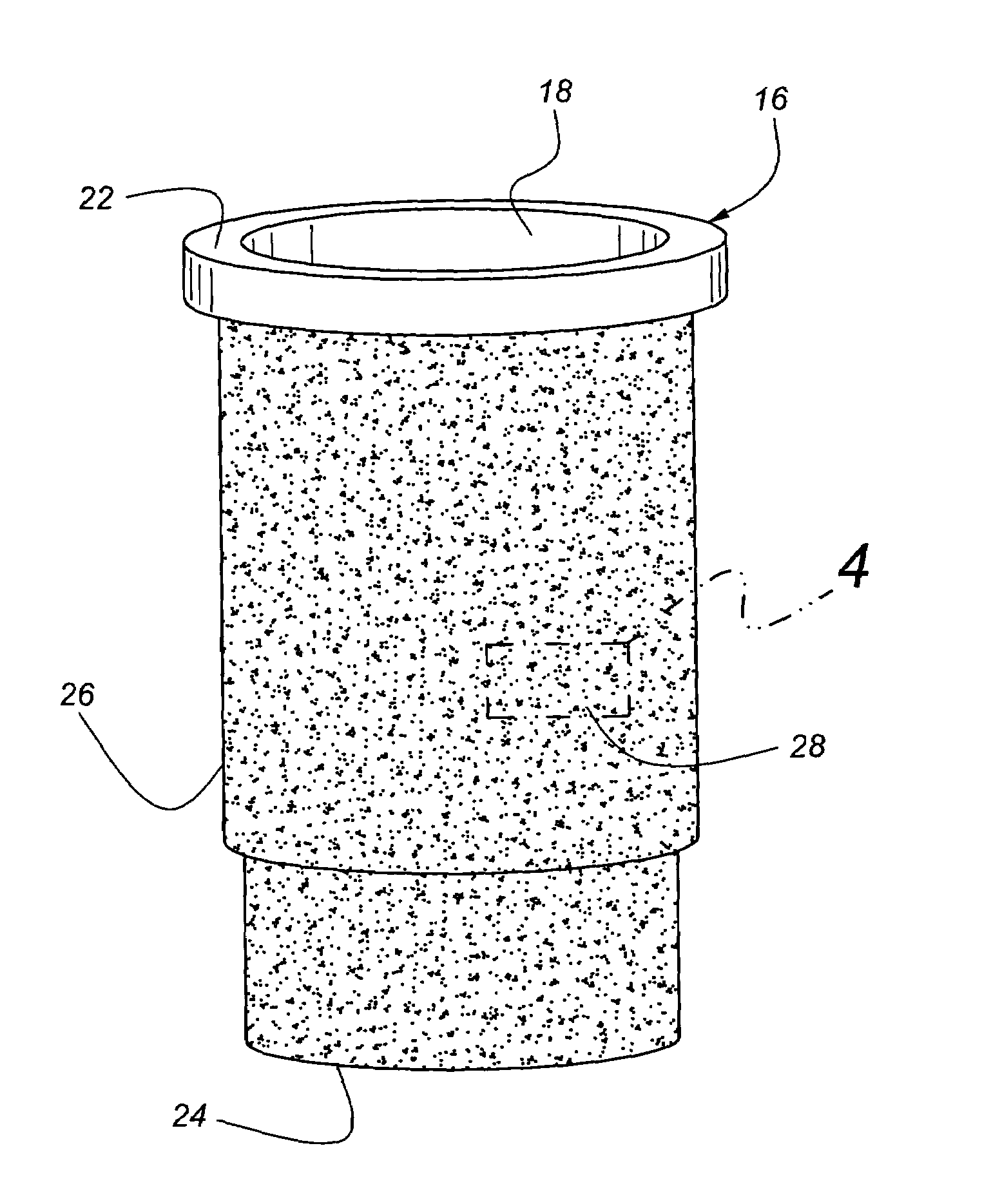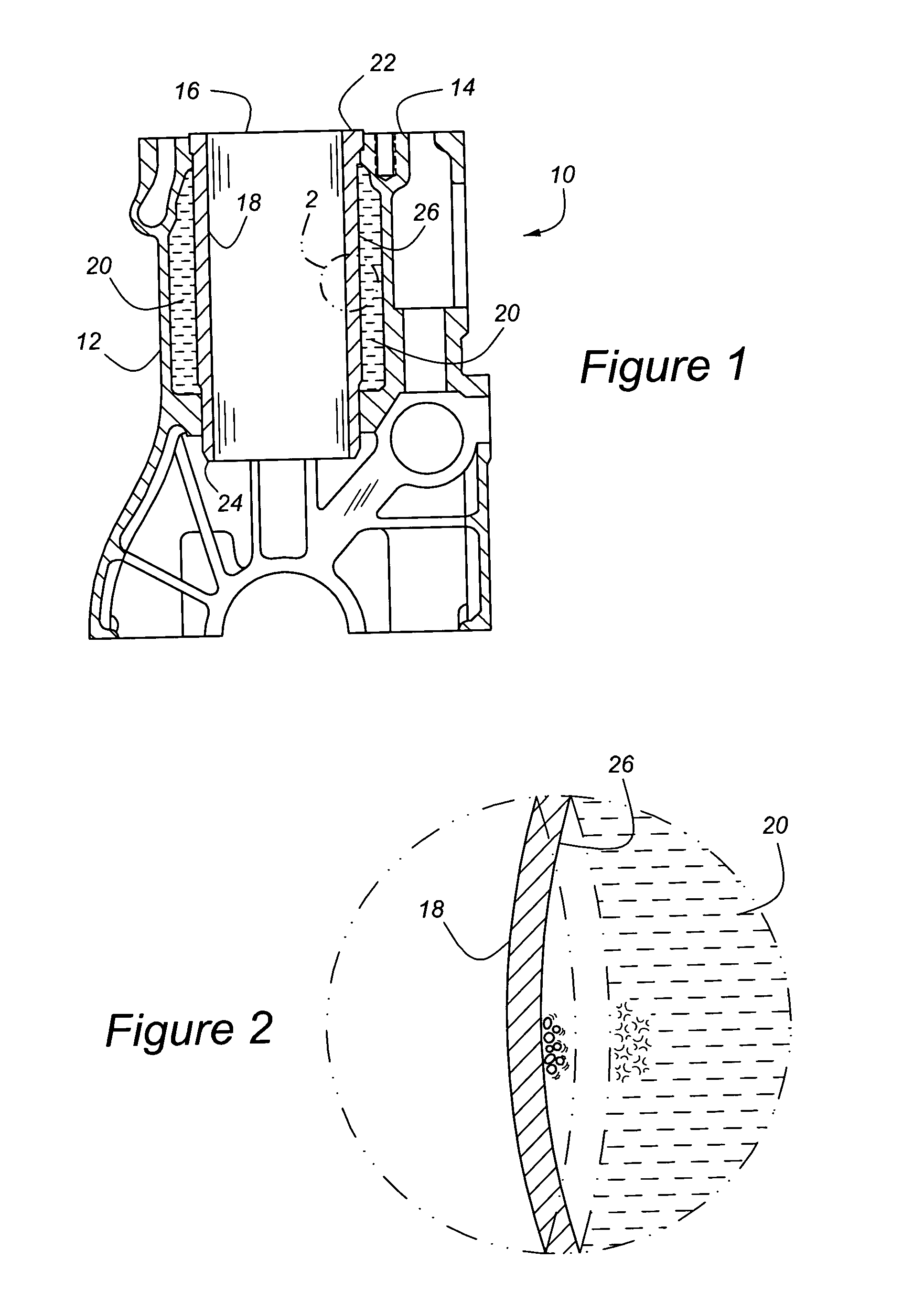Anti-cavitation diesel cylinder liner
a technology of cylinder liner and cylinder wall, which is applied in the direction of cylinders, machines/engines, pistons, etc., can solve the problems of affecting the integrity of the cylinder liner, affecting the service life of the cylinder, so as to achieve rapid dissipation of high kinetic energy and easy creation
- Summary
- Abstract
- Description
- Claims
- Application Information
AI Technical Summary
Benefits of technology
Problems solved by technology
Method used
Image
Examples
Embodiment Construction
[0022]Referring to the Figures wherein like numerals indicate like or corresponding parts throughout the several views, a liquid-cooled cylinder block for an internal combustion engine is generally shown at 10 in FIG. 1. The cylinder block 10 is largely composed of a crank case 12 typically cast from iron or aluminum. The crank case 12 includes a head surface 14 adapted to receive a head gasket (not shown). A cylinder liner, generally indicated at 16, is fitted into the crank case 12 so that, when fully assembled, a reciprocating piston (not shown) can slide within a generally cylindrical bore 18 and form a portion of the chamber in which the thermal energy of a combustion process is converted into mechanical energy. An intentional space between the cylinder liner 16 and the crank case 12 forms a coolant flow passage 20 through which a liquid cooling medium is circulated for the purpose of removing heat energy from the cylinder liner 16. The cylinder liner 16 is defined by a tubular...
PUM
 Login to View More
Login to View More Abstract
Description
Claims
Application Information
 Login to View More
Login to View More - R&D
- Intellectual Property
- Life Sciences
- Materials
- Tech Scout
- Unparalleled Data Quality
- Higher Quality Content
- 60% Fewer Hallucinations
Browse by: Latest US Patents, China's latest patents, Technical Efficacy Thesaurus, Application Domain, Technology Topic, Popular Technical Reports.
© 2025 PatSnap. All rights reserved.Legal|Privacy policy|Modern Slavery Act Transparency Statement|Sitemap|About US| Contact US: help@patsnap.com



